(www.MaltaFauna.com)
| Ligia italica Fabricius, 1798 |
| Taxonomical Classification: Animalia / Arthropoda / Crustacea / Isopoda / Scolioidea |
| |
| Further Information: This species is found in the Mediterranean and eastern-Atlantic coasts. It has an oval body, flattened on the back and on the belly; it is about 12 millimeters long. The species can live in marine and terrestrial habitats and hence share characteristics of both environments, but is more adapted to the terrestrial one where they move very swiftly and are camouflage to the rock. It is hence commonly on the supralittoral zone of rocky coasts. Drying out easily it needs constant need of moist air and hence its terrestrial life is restricted to the proximity to water. While they have gills and can exchange gas under water, they only do so when escaping terrestrial predators or being dislodged by wave action. They do not move swiftly in the water and are open to marine predation. This crustacean lacks the calcareous carapace. It bears two big and sessile eyes, two pairs of long articulated antennas, one longer than the other, which reach one third of the total length of the body and five mouth processes. The first segment of the thorax is joined to the head. The thorax bears six abdominal processes: the first pair is transformed into jaws, while the others are used for walking. The abdomen bears processes or pleopods: the first 5 pairs work as gills, while the sixth bears two long symmetrical uropods. It is characterised by diurnal activity; it moves on rocks and swims in the water, although it does not easily tolerates plunging. Breathing is branchial. Sexes are separated: eggs are incubated in a hollow formed from plates located on the thorax processes of the female. The larvae come out from the eggs which, after several moults, turn into adults. It feeds mainly on vegetable remains or on any other kind of organic material. This species distribution is at coasts of the Black Sea, Mediterranean Sea, Atlantic in northern Africa down to Cape Verde and Macaronesian Islands. Many thanks to Chris Cousin for providing the Maltese name. |
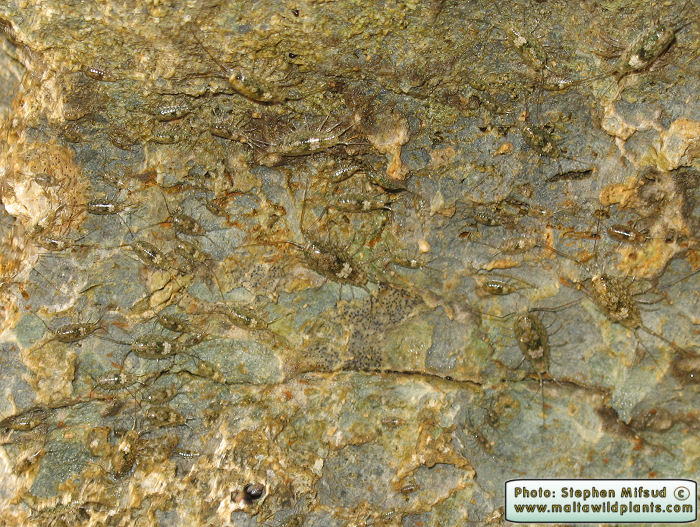 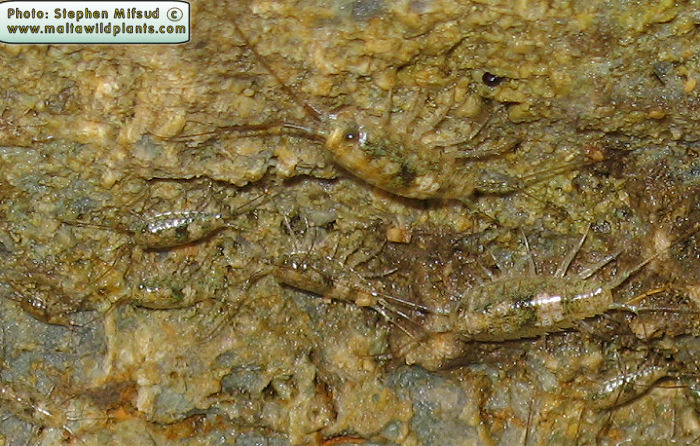 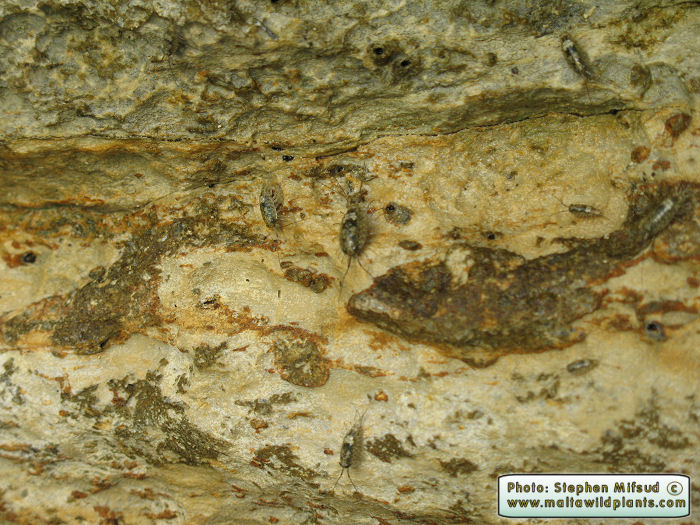 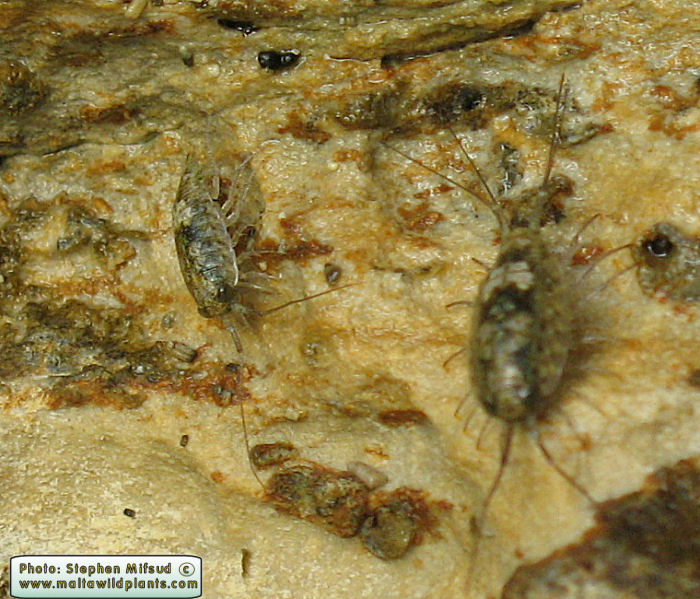 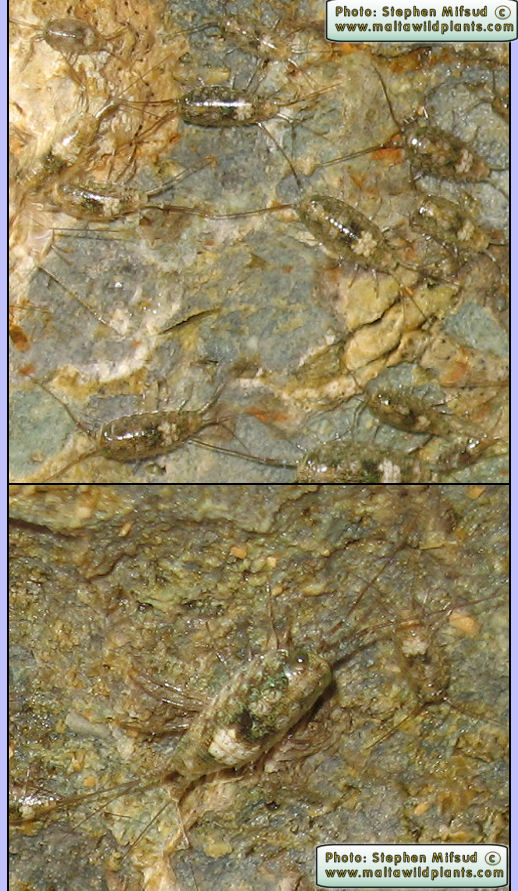 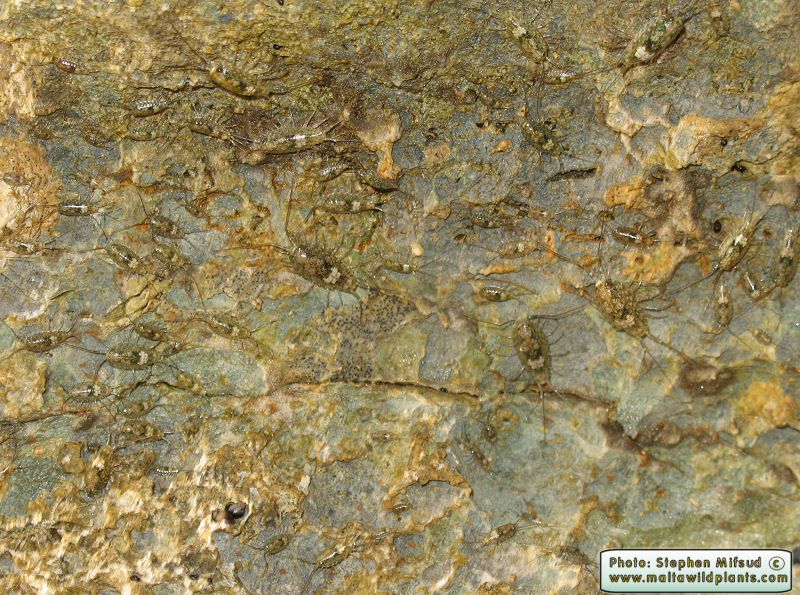 |
| Search for Ligia italica in the following online resources: | |||||
 Search on Google |
 Google Scholar |
 More info on Wikipedia |
 Global Biodiversity |
 NCBI Database |
 Watch on YouTube |
| Other Links and info | ||
| Funghi & Fauna Main Page | Wild Plants Main Index | Close This Window |
|
Image Code: LIGI-ITA (required to buy images in this page) |
 |
This website needs financial support through sponsors or advertisment - check here . |
| All material and data on this webpage (www.MaltaWildPlants.com) is under the copyright of Stephen Mifsud (2002-2018) | ||||
| This environment and biodiversity awareness website about the flora and fauna of Malta is sponsored by: | ||||
|

